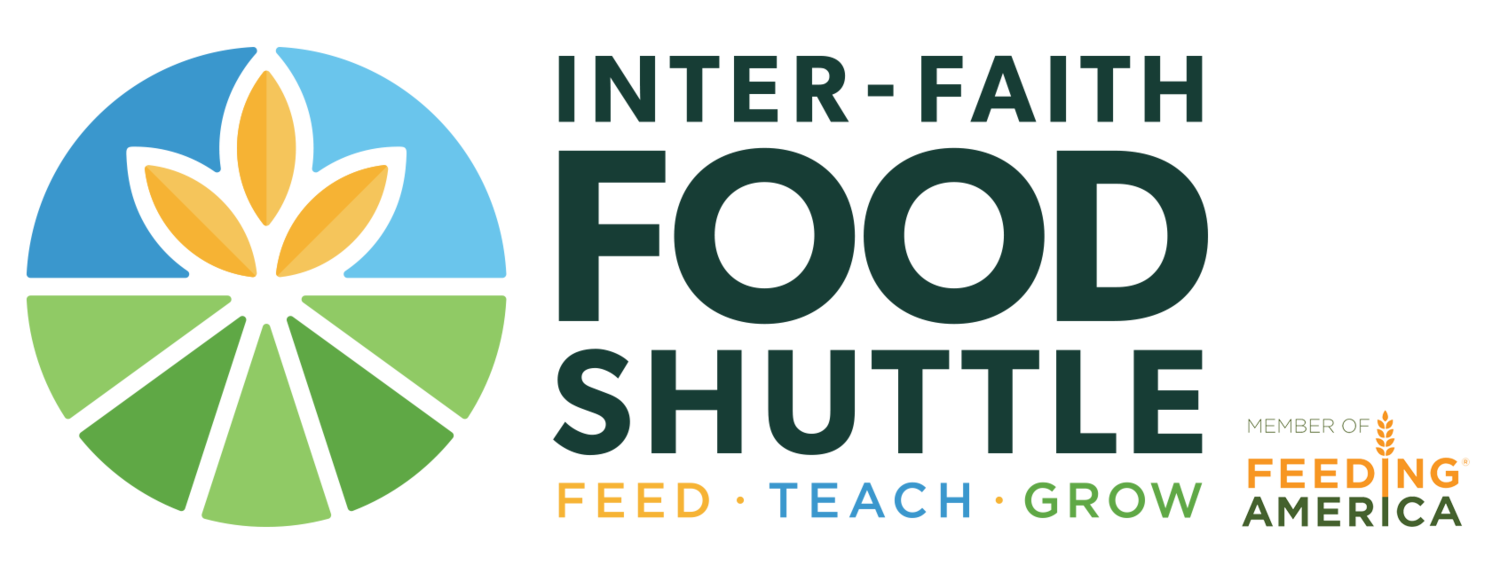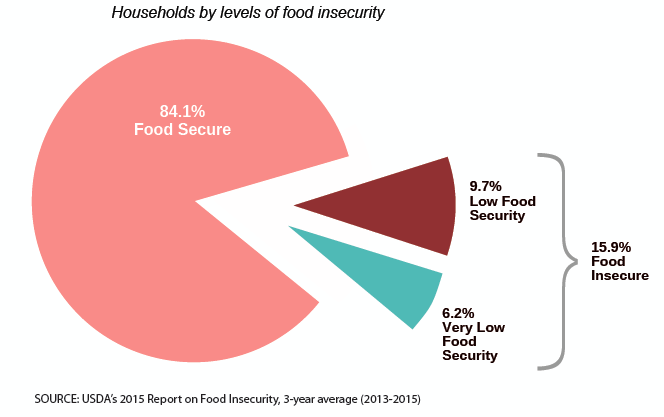Quick Facts
1.2 million people are facing hunger in North Carolina.
North Carolina is the 10th hungriest state in the nation.
1 in 6 children in North Carolina faces hunger on a regular basis.
People facing hunger in NC are estimated to need over $627 million more per year to meet their food needs.
North Carolina is the 10th Hungriest State in the U.S.
Low Food Security: Homes that often must make tough choices about the amount and quality of food they are able to provide their families.
Very Low Food Security: Homes that often miss meals.
According to the USDA, in the past year more than 90% of these families worried that food would run out; nearly 80% could not afford a balanced meal; and individuals in 96% of homes with very low food security skipped meals in order to make food last longer.
Hunger In Our Community
Inter-Faith Food Shuttle is deeply invested in strategic partnerships and expansion of programming in alignment with targeted areas of need. We often point to the fact that the accessibility of food is not only a determinant factor of health, but also prevents people from having to make an impossible choice between buying groceries, paying rent and utilities, or purchasing needed medicines. Food insecurity is a part of a much broader picture, one that we must grasp as fully as possible to determine the best solutions to help chart people out of poverty.
Interactive Data Map
This map shows the socioeconomic vulnerability of residents within our seven-county service area: Chatham, Durham, Johnston, Nash, Edgecombe, Orange, and Wake counties. Various types of data are shown by census tract, all overlaid with the map point locations of Food Shuttle programs. Explore the map to get a bird’s eye view of where our programs are tackling the root causes of hunger, including School Pantries, Mobile Markets, Backpack Buddies, Grocery Bags for Seniors, and Agricultural Education.
Community Needs Assessments
The Community Needs Assessments provide an in-depth overview of each county’s needs within the Food Shuttle’s seven-country service area. This data is rooted largely in the social determinants of health, encompassing a wide range of indicators such as poverty level, education, healthcare access, ethnicity, and more. To access the reports, click on the county you would like to review. Wake, Durham, Orange, Johnston, Chatham, Nash, and Edgecombe counties each face unique barriers to food security. These assessments are derived from recent and reliable sources with references available throughout the documents. This information shows the greatest areas of need across the Food Shuttle’s service area, strategically guiding programming as the Food Shuttle expands and grows its programs and partnerships.
Social Determinants of Health
Solutions to End Hunger & Poverty
Advocacy
Many of the programs and policies in operation in North Carolina are established under federal law. From SNAP to child nutrition programs, the Federal Administration and Congressional leadership have suggested severely reducing the availability of these programs through block granting, eligibility restrictions and underinvestment.
It is critical that our policymakers ensure the effectiveness of North Carolina's hunger relief programs.
SNAP is one of the most direct ways to fight food insecurity.
North Carolina should develop a plan to provide a job, volunteer position, or skills training opportunity to all individuals, subject to time limit.
The State should recognize the critical role food banks and healthy retail options in food deserts play in providing food.
For children, school-based initiatives such as the Community Eligibility Program and Breakfast in the Classroom are effective policies to address hunger.
SNAP reaches as many or more rural and small town residents as metro residents; is especially important to families with children; and most families receiving SNAP are working or are recently unemployed. See SNAP Map By County.
Education
Children are better equipped to learn when they have the nutrition they need. Yet too many low-income children who are eligible for free and reduced-price meals are not accessing them. More must be done to increase participation in school meals, summers meals, after-school meals, and child care meals.
Adults who had access to food supports as children were 18% more likely to graduate from high school.
More on College Hunger: NYT: It's hard to study if you're hungry
Nutrition
Research shows that food insecurity is linked with costly chronic diseases and unfavorable outcomes. According to the Root Cause Coalition, the annual costs of hunger to the U.S. health care system are $130.5 billion. Greater investments in nutrition programs would go a long way in addressing obesity and other negative health outcomes faced by low-income Americans.
A recent study shows adults who had access to food supports as children were 16% less likely to be obese.
Economy
SNAP serves as the first line of defense against hunger for millions of Americans. USDA research shows that each $5 of SNAP benefits generates nearly twice that in economic activity.
On average SNAP benefits lifted 175,000 North Carolinians, including 81,000 children, out of poverty from 2011 to 2014.
SNAP benefits pumped upward of $2 billion into the state's economy. Much of this economic activity benefits local grocery stores and food retailers.
More than 9,600 individual stores in NC accept SNAP.
Federal nutrition programs can’t do it alone. There must be a comprehensive approach.
















